Curious about how to make matcha? Let’s explore the ins and outs of preparing this vibrant green
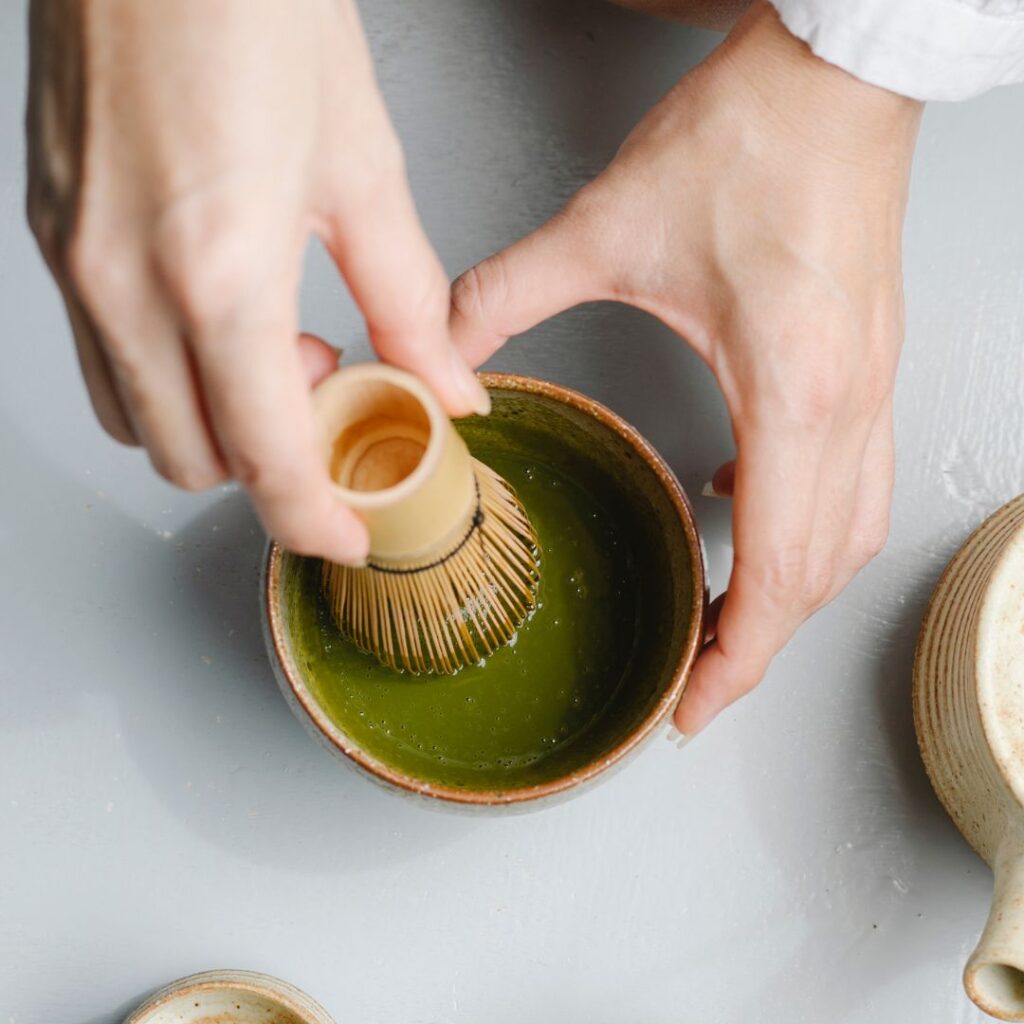
how to make matcha with a whisk
- Start by sifting 1-2 teaspoons of matcha powder into a bowl. This step is crucial to remove any clumps and ensure a smooth texture in your matcha drink.
- : Pour approximately 2 ounces of hot water into the bowl with the matcha. The water should be hot but not boiling, ideally at 175°F, to preserve the delicate flavors of the matcha.
- Using a bamboo whisk, start whisking the matcha and water vigorously in a W or M pattern. This is not just mixing; it’s about aerating the matcha to create a frothy texture with tiny, even bubbles. Continue whisking until a creamy froth forms on the surface.
- Once you achieve a light and frothy consistency, your matcha is ready to drink.
Once you’ve mastered this technique, you’ll find that making matcha becomes an empowering ritual. You control the strength, the texture, and the temperature, adjusting each element to suit your taste perfectly. This isn’t just about making a cup of
how to make matcha without a whisk
If you don’t have a traditional bamboo whisk, you can still enjoy a smooth and frothy cup of matcha by using alternative methods. One easy way is to use a small kitchen whisk. Just place your matcha powder and a little hot water into a bowl, then whisk vigorously in a zigzag motion until you see a layer of froth form. This method gives you control over the consistency of your matcha, allowing you to enjoy it exactly how you like it.
Another option is to use a milk frother. Start by mixing the matcha powder with a small amount of hot water to create a paste. Then, add more hot water and use the frother to whip up a nice froth. This approach is quick and efficient, perfect for when you’re in a hurry.
Lastly, shaking matcha in a tightly sealed jar or bottle with hot water is a no-fuss method that yields great results. Just make sure to shake vigorously to dissolve the matcha powder completely and achieve that desirable frothy texture. This method puts the power in your hands, literally, to whip up a delightful matcha drink anytime, anywhere, without needing specialized tools.
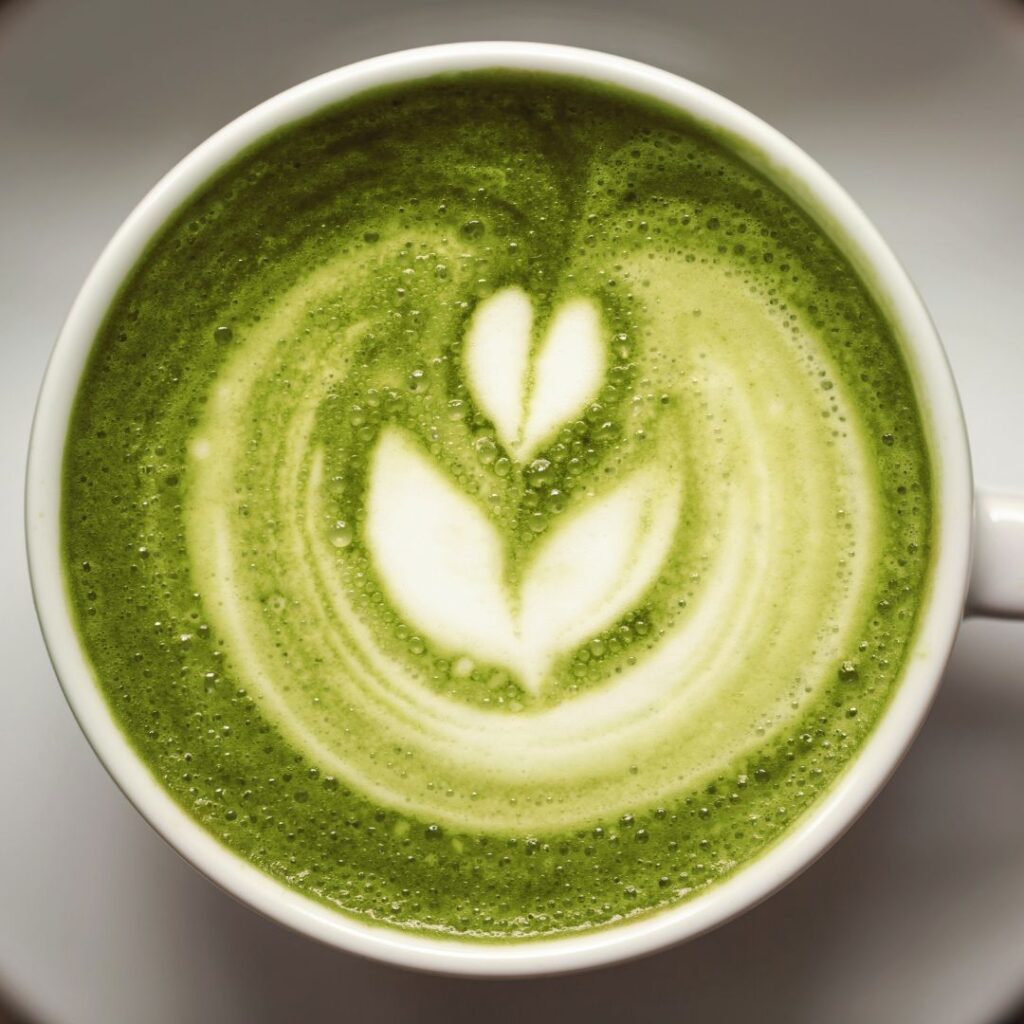
how much matcha tea per day
After exploring alternative ways to make matcha without a whisk, let’s now consider how much matcha
Generally, consuming 1 to 2 teaspoons of matcha powder per day is considered safe and beneficial. This amounts to about one or two cups of matcha tea. It’s important to listen to your body’s response to matcha and adjust accordingly. Some people might be more sensitive to caffeine, which is present in matcha, although in lower amounts compared to coffee.
If you’re new to matcha, start with a smaller amount to see how you react, especially if you’re sensitive to caffeine. You can gradually increase the amount based on your comfort level and how your body tolerates it. Remember, the goal is to enjoy the health benefits of matcha without experiencing any adverse effects from too much caffeine.
Staying within this suggested range not only helps you control your caffeine intake but also allows you to enjoy matcha’s unique flavor and health benefits as part of your daily routine.
 Organic Matcha (Kagoshima) 40g
Organic Matcha (Kagoshima) 40g - Offers an authentic and pure matcha taste, ideal for traditional ceremonies.
- Abundant in antioxidants, vitamins, and minerals, potentially supporting well-being.
- JAS certification ensures it's free from pesticides, chemicals, and GMOs.
- Processed using traditional methods by tea masters, maintaining quality and tradition.
- Creates a vibrant green color and frothy texture, enhancing the visual experience.
- Primarily intended for ceremonial preparation, it might not be suitable for all recipes.
- Premium quality ceremonial matcha can be more expensive compared to regular tea.
- The unique matcha flavor might not be enjoyed by all palates.
how long matcha caffeine last
Understanding the duration of caffeine effects from matcha is important, as it varies from person to person but generally lasts longer than coffee. When you sip a cup of matcha, you’re consuming the whole
On average, the caffeine from matcha can last anywhere from three to six hours, depending on your metabolism, body weight, and dietary habits. It’s this prolonged effect that makes matcha an ideal choice for those seeking sustained focus and energy. However, it’s important to listen to your body’s response. If you’re sensitive to caffeine, you may experience effects for a longer duration.
In your quest for controlled energy, paying attention to how matcha affects you personally will help you maximize its benefits. Adjust your consumption according to your body’s reaction, ensuring that matcha serves as a tool for energy and concentration, tailored specifically to your needs.
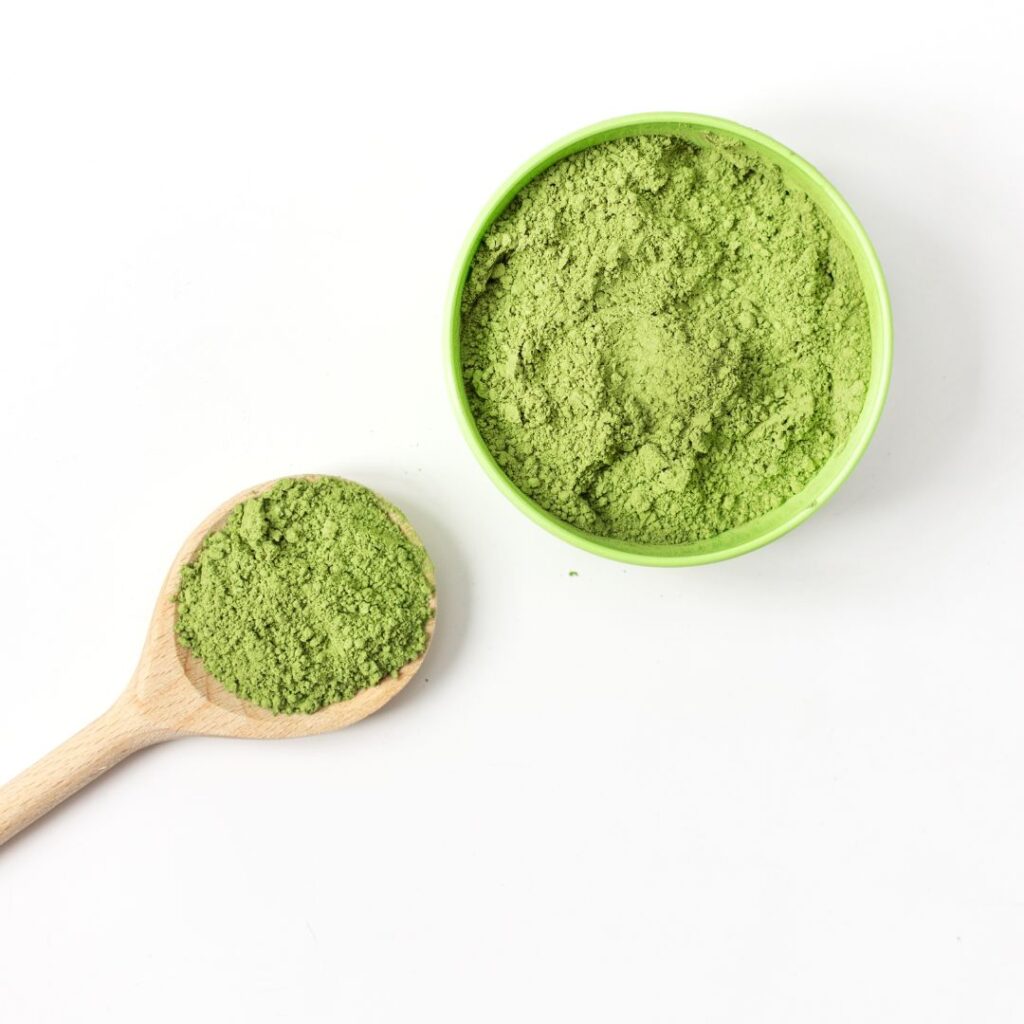
how much caffeine in 1 tsp matcha
A single teaspoon of matcha powder packs a punch with approximately 68 milligrams of caffeine, giving you the energy boost you need to tackle the day head-on. But fear not, because with matcha, you’re the captain of your caffeine intake ship. Whether you’re a caffeine connoisseur or just dipping your toes into the matcha waters, you have the power to adjust your matcha dosage to suit your body’s needs and your daily agenda.
Unlike its jitter-inducing counterpart, coffee, matcha delivers its caffeine kick in a smooth and steady stream. Say goodbye to the caffeine crash and hello to sustained focus and alertness throughout the day.
If you’re a newbie to matcha or tend to be sensitive to caffeine’s effects, consider starting with half a teaspoon of matcha powder. That’s roughly 34 milligrams of caffeine—a manageable amount that allows you to ease into the matcha experience. As you build up your matcha tolerance and familiarity, you can gradually increase your dosage to a full teaspoon, finding that sweet spot of energy and serenity. So go ahead, embrace the matcha madness, and seize the day with a sip of energizing goodness.
Selecting High-Quality Matcha
Now that you’ve become a matcha maestro in the kitchen, let’s talk about selecting the top-quality matcha powders to elevate your daily
But hold your whisk—choosing the right supplier is paramount to ensure you’re getting the real deal. Seek out companies that take pride in sourcing from reputable producers and are transparent about the origins and production methods of their matcha. With a little attention to detail and a keen eye for quality, you’ll be well on your way to a matcha experience fit for
Proper Storage for Freshness
To keep your matcha powder as fresh as the day you bought it, nailing down the storage game is essential. Toss that vibrant green goodness into an airtight container, making sure to keep it far away from any heat, light, or moisture sources. For optimal freshness and flavor preservation, stash it in a cool, dark cupboard or even pop it in the fridge.
By snagging top-notch matcha and giving it the VIP treatment in storage, you’re ensuring that each cup you whip up is bursting with delightful flavor and nutritional goodness. It’s all about enriching your journey to mindfulness and wellness, one perfectly stored teaspoon at a time.
Matcha, with its unique vegetal and slightly bitter taste, pairs wonderfully with a variety of foods and drinks that can enhance its flavor profile. Here’s an in-depth look at some pairing suggestions:
The Art of Tasting Matcha
Tasting matcha is a holistic sensory experience that engages the visual, olfactory, and gustatory senses to create a unique flavor profile that is deeply rooted in Japanese culture.
Visual Aspect: The visual journey begins with the vibrant green color of matcha, a hue that is both calming and inviting. This intense green is achieved through the careful shading of the
Olfactory Aspect: As you bring the bowl of matcha to your nose, the olfactory senses are greeted with a fresh, vegetal aroma. This scent is reminiscent of sweet grass and green leaves, a prelude to the flavors that unfold upon tasting. The steam carries with it subtle notes of the sea, a hint of the savory umami that awaits.
Gustatory Aspect: Upon sipping, the palate is enveloped by the complex flavor profile of matcha. The initial taste is a delicate sweetness, often described as a natural, refined sugariness that is inherent to the
The creaminess of matcha is not just a flavor but a sensation. It is the velvety texture that coats the tongue, a result of the fine powder whisked into water, creating a suspension that is both rich and smooth. This creaminess enhances the overall mouthfeel, making each sip a luxurious experience.
Astringency is the final note in the symphony of flavors, a slight bitterness that adds depth and balance. It is not an overpowering bitterness but a necessary contrast that highlights the sweetness and umami. The astringency in matcha comes from catechins, antioxidant compounds that also contribute to the health benefits of the
Harmony of Flavors: The interplay of umami, creaminess, and astringency in matcha creates a flavor profile that is harmonious and complex. Each sip offers a journey through these tastes, with the umami providing depth, the creaminess adding luxury, and the astringency delivering a clean finish. This balance is the hallmark of high-quality matcha and is what makes it a beloved beverage and a cultural icon.
Matcha Pairings
Desserts and Baked Goods
Matcha’s complex flavor complements the richness of chocolate-based desserts. The sweet vegetal notes of matcha can balance the bitterness of cocoa, making it an excellent pairing for chocolate cakes, cookies, and brownies. Additionally, matcha can be incorporated into the desserts themselves, such as in matcha-infused frosting or matcha cheesecake.
Snacks
For a lighter pairing, matcha goes well with snacks that have a range of flavors from vegetal to nutty. Consider pairing your matcha with:
- Crackers and cheese cubes
- Light sandwiches with cucumber or salmon
- Nuts like almonds or lightly salted cashews These snacks complement the earthy tones of matcha without overpowering its delicate taste.
Fruits
The natural sweetness of fruits can enhance the flavor of matcha. Try pairing matcha with:
- Strawberries or raspberries for a refreshing contrast
- Blueberries or mango for a tropical twist
- Oranges or lemons to add a citrusy zing These fruits can also be added to matcha smoothies for a nutritious and flavorful drink.
High-Fiber Foods
Matcha pairs well with high-fiber foods like grains, beans, and seeds. These foods can help balance the intensity of matcha’s flavor and are also beneficial for digestion. Consider enjoying your matcha with a bowl of oatmeal or a quinoa salad.
Drinks
When it comes to drinks, matcha is versatile. It can be enjoyed simply whisked with hot water, as a traditional matcha

Konnichiwa! (Hello!) I'm Pat Tokuyama, a Japanese tofu cookbook author, who travels for music, food, and adventure. If you like Japanese tea, checkout some of the newestorganic japanese tea, matcha bowls and noren and more!
** Curious about the Plant Based Japanese Cooking Club? ** Learn more here!
What to Avoid
It’s generally best to avoid pairing matcha with very strong flavors that can overshadow its delicate profile. This includes heavily spiced foods or very pungent cheeses.
In conclusion, matcha’s versatility allows it to pair well with a wide range of foods and drinks. Whether you’re enjoying a sweet dessert, a light snack, or a refreshing drink, there’s a matcha pairing that can elevate your tasting experience. Remember, the best pairings are the ones that suit your personal taste preferences, so feel free to experiment and find your favorite matcha combinations!
Conclusion
Now that you’ve learned the art of making matcha, both with and without a whisk, and understand the daily amount to enjoy plus the caffeine content, you’re set to experience its rich, calming benefits.
Remember, enjoying matcha goes beyond its health perks; it’s about embracing a moment of tranquility in your day.
So, immerse yourself in the ritual, savor each sip, and let the vibrant energy of matcha fuel your journey to mindfulness and wellness.


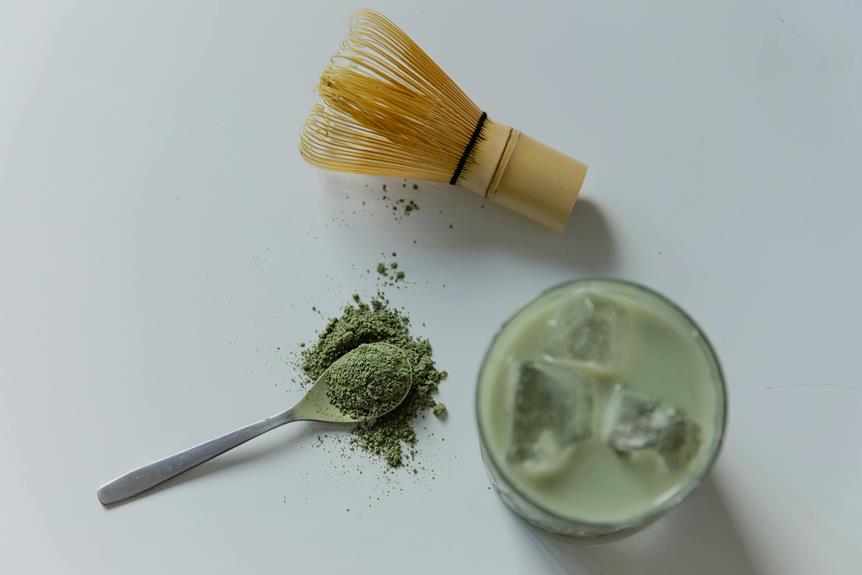


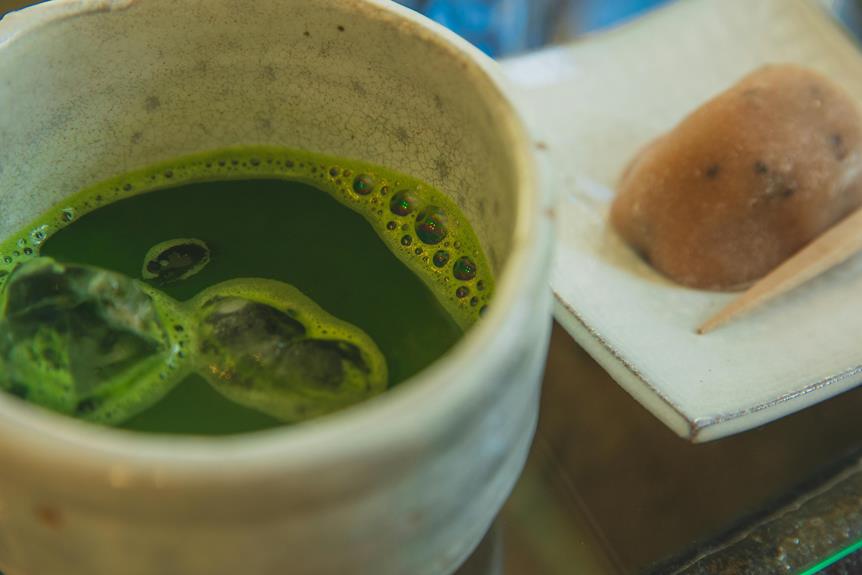

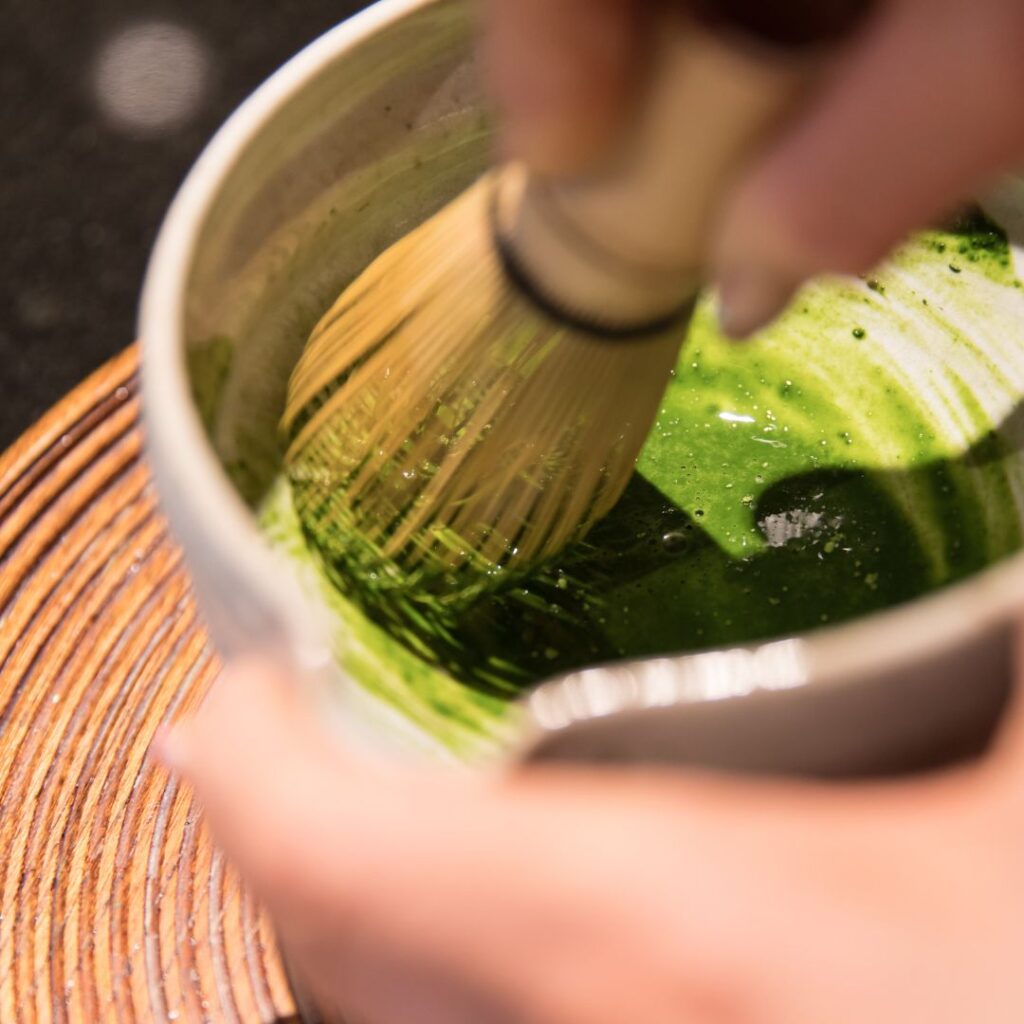
Konnichiwa! (Hello!) I'm Pat Tokuyama, a Japanese tofu cookbook author, who travels for music, food, and adventure. If you like Japanese tea, checkout some of the newestorganic japanese tea, matcha bowls and noren and more!
** Curious about the Plant Based Japanese Cooking Club? ** Learn more here!